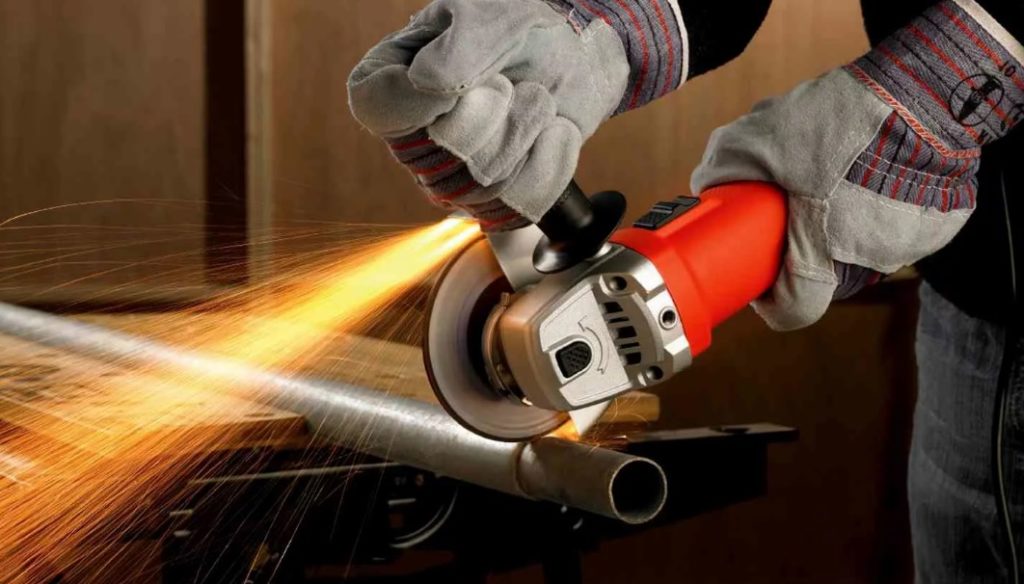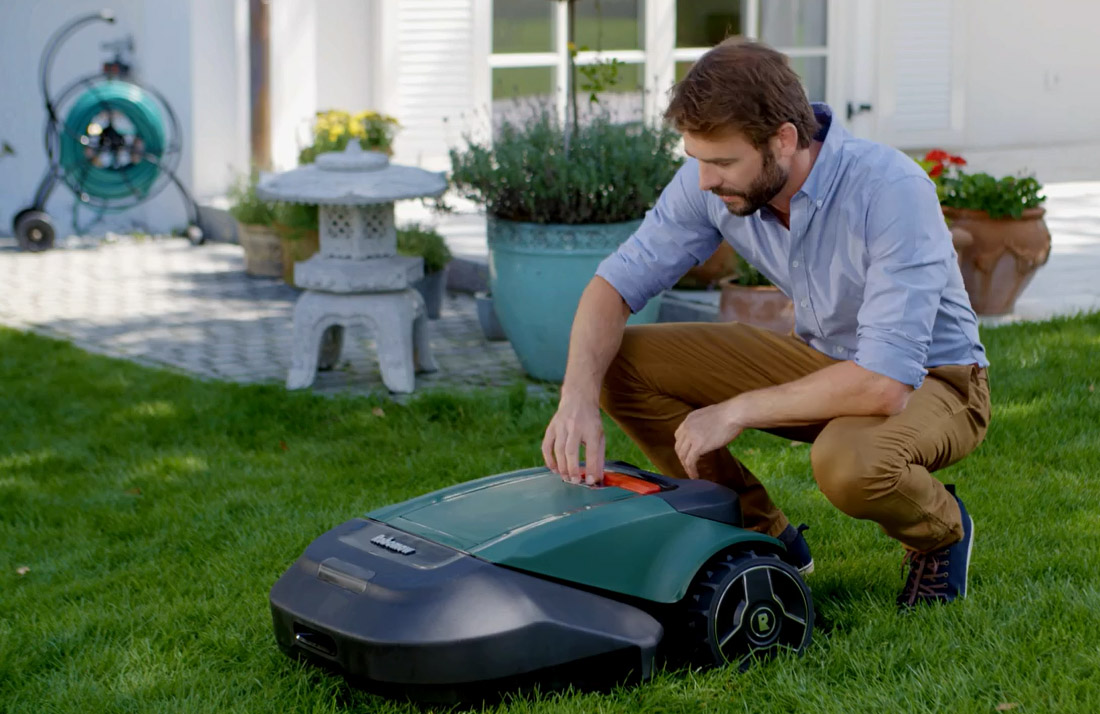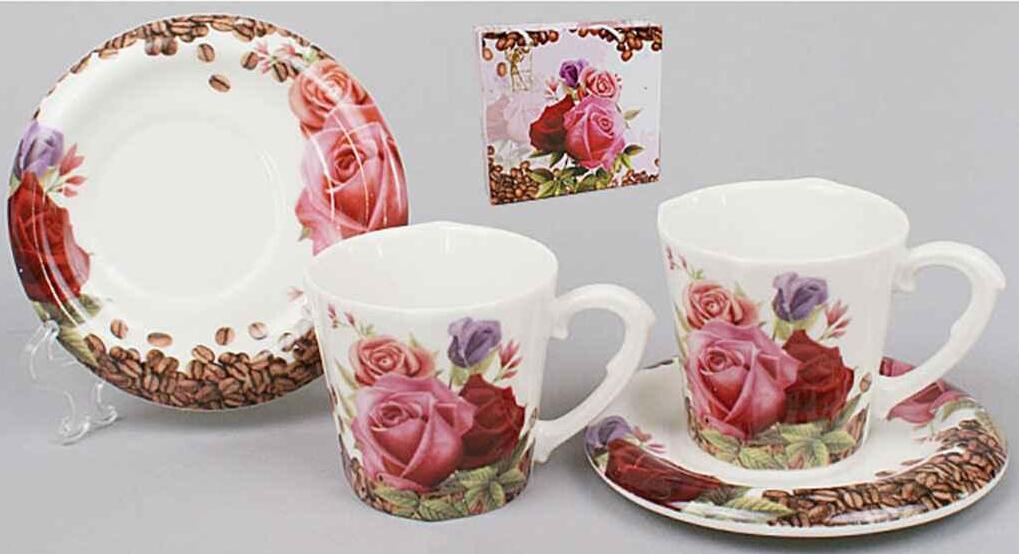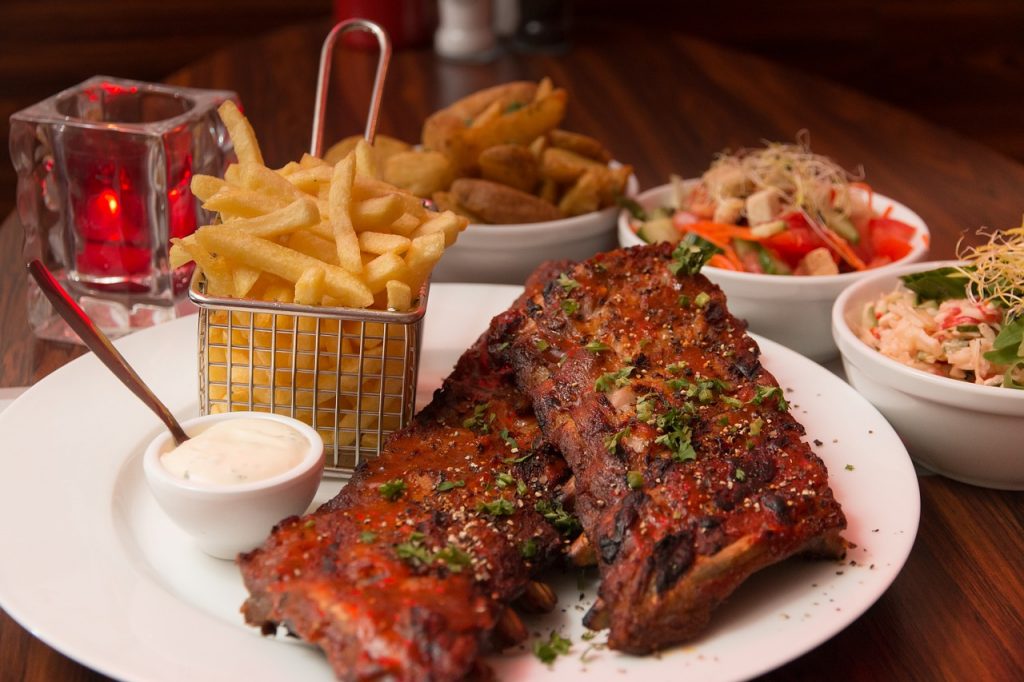Rating of the best cutting wheels for the grinder for 2025

Abrasive or carved discs are accessories for an angle grinder (aka "grinder"). Such equipment belongs to the category of consumables, with the help of which work processes are carried out. These disks have a different name - circles (due to their similarity). They are based on a multilayer reinforcing base, but they are made not from steel, but from abrasive materials. The reason for this is the fact that when two steel elements come into contact (when one of them rotates), both of these elements will quickly overheat, which will reduce work productivity. The abrasive base consists of small carbide or electrocorundum fragments, which have an increased density. When cutting metal through such circles, their smallest fragments simply burn out, thereby creating a cut.

Content [Hide]
- 1 Scope of use
- 2 Blade material
- 3 Outer and inner diameter of cut-off wheels
- 4 Cutting wheel thickness
- 5 Influence of hardness characteristics
- 6 Cutting disc markings and their meanings
- 7 Basic Security Measures
- 8 Rating of the best cutting wheels for the grinder for 2025
- 9 Instead of an epilogue
Scope of use
The tooling in question can be classified by application into specific categories of materials - wood, metal or concrete. Each type of this device will have its own distinctive properties, but most often cut-off wheels work on metal. Such metal objects of work may include products:
- From metals and their alloys;
- Of steel;
- From cast iron;
- Stainless steel;
- From non-ferrous metal (copper and aluminum);
- From galvanized products.
Fundamentally, the abrasive cutting disc differs from other nozzles adapted for processing wood or concrete. It's all about the consistency of the abrasive material, which is much less applied to the disc for concrete and wood.
Blade material
Due to the fact that the angle grinder or “grinder” is a universal equipment, it can replace many other tools, for example, a hacksaw for wood or metal. The properties of versatility of the described equipment are achieved through the use of a variety of nozzles made from a variety of materials. Discs for cutting metal products are considered to be often used, slightly less popular for equipment for sawing wood - after all, the “grinder” is not fully suitable for this. An abrasive wheel for cutting metal consists of two bases - a reinforcing layer used as a working base, and a layer of silicon carbide or corundum particles deposited on it. The latter particles are applied in the form of small or enlarged grains, which are fused to a reinforcing base, which can be volcanic or bakelite.
Choosing Between Vulcanite and Bakelite
The above materials are practically the same type and are used as standard for the production of cutting wheels for grinders. The reinforcing layer itself is visually represented as a mesh with small cells, which is located inside the nozzle. The following facts can be mentioned as distinctive positive and negative properties of these base materials:
- A vulcanite disk has increased elastic properties, which allows manufacturers to produce tooling with a small thickness (from 0.8 millimeters). They are based on rubber and sulfur, which have undergone special processing. It is they who add elasticity to the circle, which has a positive effect on work productivity, because thanks to the elastic there are no disturbing extraneous vibrations.At the same time, the compacted structure of the entire material prevents the risk of destruction and damage to the wheel itself. Vulcanite wheels are perfect for thin and burn-free cutting. The disadvantage of such devices can be called their poor resistance to elevated temperatures, therefore, when the heating limit is reached at 160-200 degrees Celsius, their destruction occurs. From this comes the rule that the thicker and denser the sawn product, the faster the circle will heat up and its useful performance will decrease.
- Bakelite bases are able to withstand temperatures ranging from 250 to 300 degrees Celsius, however, they spark strongly during operation. They are based on the consistency of formaldehyde resins in the form of a powder with accompanying fillers. If it is necessary to cut dense / thick metal, for example, beams or rails, it is required to use just such discs. In turn, bakelite has less elasticity, which leads to production vibrations.
- Wheels made on the basis of a ceramic bond are the most expensive. This is due to the fact that they are based on many different materials - feldspar, quartz, refractory clay, talc and others. Their main difference is that they can easily interact with moisture and have refractory properties. Among the minuses, weak resistance to mechanical stress can be distinguished. In principle, ceramic bond wheels are equally suitable for both thick and thin materials, and their careful use will be the main condition for use.
IMPORTANT! The reinforcing elements, referred to as a bond, may or may not be present on abrasive discs.This, of course, will affect their strength and durability, but such models will have a lower price. Nevertheless, in the absence of a reinforcing layer on the disk, it is better not to use such equipment on dense materials!
Differences between working fragments - carbide and electrocorundum
It is possible to find out which abrasive element is installed on a particular wheel by studying the corresponding marking. However, the functionality of these elements is limited by certain properties, therefore, it is not recommended to use them for any material. The cutting disc, made with electrocorundum inclusions, is perfect for cutting dense steel objects. This is due to the fact that aluminum oxide fragments are softer, which has a great effect on productivity when machining strong types of steel. Silicon carbide wheels are extremely hard, so they are best used on non-ferrous metals, stainless steel, galvanized steel and other soft objects. Also, silicon-carbide and electrocorundum circles differ among themselves also in resistance to elevated temperatures. For example, the latter are able to withstand temperatures as much as 1900 degrees Celsius, while for the former this indicator is limited to a limit of 800 degrees. This limit can be even lower if boron carbide or diamonds are used as abrasive fragments.
Outer and inner diameter of cut-off wheels
Due to the fact that angle grinders differ in size and power, for each of the existing variations of the tool, discs of the appropriate sizes are used in terms of inner / outer diameters. Modern manufacturers make circles with the following dimensions (in millimeters) for various types of grinders:
- 115 - are used exclusively for low-power household equipment;
- 125 - suitable for both household and semi-professional models of "grinders";
- 180 - aimed at the segment of angle grinders of medium and high power;
- 230 - used on powerful equipment for direct professional use.
Circles can be larger than 300 millimeters, but they are used exclusively on special equipment and in working machines.
Regarding the mounting holes, i.e. their internal diameters, then the “expansion” in numbers is much smaller there - there are only three main types of them (in millimeters):
- 22;
- 22,23;
- 32.
The second type is the most popular, because it is suitable for "grinders" with a double landing shaft size - 22.23 and 22 mm. The 32 mm holes in the circles indicate their use only on special machines. There are also smaller internal diameters, such as 10, 13 and 16 millimeters. They are mostly intended for fine (“jewelry”) work, and the outer diameter of such discs does not exceed 100 millimeters.
Cutting wheel thickness
Wheels with a large thickness are more often used for sharpening / grinding, and with a small (i.e. thin) - for making cuts / cuts. Nevertheless, the minimum thickness of the disk will not be less than 0.8 millimeters, and the maximum will not exceed 4 millimeters. When choosing discs by thickness, you must be guided by the following categories:
- To achieve an effective result when cutting, you will have to make less effort and spend less time if the equipment is thin;
- In cases where a thick circle is used, then performing quality work will require more time and more effort.
However, some experts still prefer discs with a greater thickness, justifying their choice by the fact that they have increased strength and are less prone to destruction. Nevertheless, practice shows the opposite: it is much safer to cut metal with a thin disk, but before starting work it should be selected properly. Safety is justified by increased elasticity, with the possibility of their unimpeded bending in the absence of irreparable deformation, which nozzles with a large thickness cannot boast of.
Influence of hardness characteristics
Disc models under consideration have different hardness, which will depend on the material of manufacture. When selecting a nozzle for this parameter, one should be guided by a simple rule - the harder the material is supposed to be processed, the less hard the material used to manufacture the tooling used should be. The following advice can be cited as a striking example: for cutting / sawing cast iron, metal or steel, you should use electrocorundum equipment. But for cutting aluminum, copper or stainless / galvanized steel, it is quite possible to get by with a silicon carbide nozzle. In addition, it should be remembered that the grain size will also affect the hardness of the disk - this parameter is indicated on the front side of the circle and is marked with the letters "M" and "T" ("soft" and "hard", respectively).
IMPORTANT! It is also necessary to pay attention to the "hardness index", which is indicated by two numbers after the corresponding letter. Thus, the larger the number, the higher the hardness.
Cutting disc markings and their meanings
Any cutting equipment for angle grinders must have an accompanying marking, which reflects all the most necessary technical data.Only knowledge and the ability to decipher the values \u200b\u200bspecified there will help you choose the right type of nozzle. Below is a list of basic information, the presence of which is mandatory:
- The name of the manufacturer is indicated at the very top.
- The size of the inner diameter (landing ring), thickness and outer diameter are applied directly below the mounting hole and may be as follows: "180 x 1 x 22".
- The material of the objects on which the circle can be applied. Typically, inscriptions are made in Latin, for example, Metal - for abrasive models, Steel - cutting steel, Aluminum - cutting aluminum and other non-ferrous metal, Inox - stainless steel, Castrion - cast iron and steel casting. There are also universal samples, on which the functionality is marked "Uni".
- Types of nozzles, talking about the design features of the mounting hole. A flat circle is indicated by the numbers "41", having an offset to one of the sides - "42" (this is how sharpening and grinding nozzles are usually marked).
- Bond material - refers to a vulcanite, bakelite or ceramic base. On Russian models, it is indicated by two letters, for example, “BU” - “reinforced bakelite”. The same marking in English looks like “BF” - “Bakelite forced”.
- Wheel material type. The letter "A" means aluminum oxide, the letter "C" means silicon carbide. Before the letter there should be numbers indicating the size of the fragment (grain).
- Hardness is reflected in the letters "M" and "T" and after them the corresponding hardness index should go.
- Maximum working speed - it depends on the type of reinforcing bundle. For bakelite, this parameter is set in the range from 80 to 100 meters per second, for volcanite, this indicator varies from 50 to 80 meters per second.It is from the speed of rotation that the overall speed of the work will depend.
- The expiration date is the most important parameter responsible for the overall usability of the disc. Nowadays, few people pay attention to this period, which, in turn, often leads not only to a breakdown of the tool itself, but also to injuries to the operator. Therefore, this parameter must be checked without fail before purchase. It is indicated in the form of a month and a year and is located on the steel part of the landing ring. If this period has expired, or less than a month is left before its expiration, then the use of such a nozzle is strictly prohibited.
IMPORTANT! In addition to the basic information, other data may be indicated on the front of the disk, at the request of the manufacturer. These may include the names of GOST, in accordance with which the circle was produced, the class of its unbalance, the sound index, and similar optional information.
Basic Security Measures
Setting the circle with the correct side
The front part of the disk depicts the logo of its manufacturer, technical marking, and also contains a metal washer. On the other hand, which is free from any inscriptions, there is no such washer. As a rule, the disks themselves do not say which side is correct for installation, therefore, here banal logic comes to the rescue:
- If the cutting nozzle is installed with a pattern and markings outward, then a person will always see what he is using. And this fact is important if the tool is used by several people at the same time.
- If the disk is installed with a pattern inside, i.e.“jacket” to the equipment gearbox, and its metal washer is facing the flange, it will be clearly seen that the abrasive surface will come into contact with the clamping nut. Thus, during operation, the nut can be overtightened and it will simply be impossible to unscrew it. And this can already lead to damage to the instrument.
IMPORTANT! The wrench, usually supplied with the angle grinder, should be designed to unscrew the clamping nut, which can also be tightened by hand, using a self-tightening process.
Cutting process: direction of sparks
Each specialist uses his own ways of dealing with the "grinder". You can cut with sparks on yourself, and from yourself. Both of these methods have their pros and cons.
If cutting with sparks falling away from the operator, then:
- The overview of the working area will not be blocked by anything (because a sheaf of sparks will not overshadow it);
- Sparks flying in the opposite direction from the operator and the risk of accidentally burning through clothes is almost non-existent.
As a “minus”, you can denote that a “backstroke” can happen, and if the operator cannot hold the tool in his hands, then he will simply fly in his direction, which can create a traumatic situation.
If you cut in your own direction, then:
- Falling sparks will close the work area;
- Sparks will fall on clothes.
The advantage here is that even with a reverse impact, the safety of the operator will be out of danger - the tool will fly in the exact opposite direction.
Elimination of the risk of tool jamming
Special safety must be observed when cutting workpieces of thick volume (as an example, shaped pipes).In this case, it is necessary to properly position the workpiece so that at the end of the cut, the edges of the groove do not close and do not pinch the grinder disk itself. Such a situation can not only damage the wheel or the mechanism of the angle grinder as a whole, but can also lead to a “kickback”. Thus, when cutting metal objects, it is important to ensure that the edges of the product open as slowly as possible or simply do not interfere with the work of the cutting wheel. To do this, you can put boards under a large object, and when working on a workbench, use only its extreme part.
Rating of the best cutting wheels for the grinder for 2025
Budget options
3rd place: "Gigant SBF C41/125-1.2"
votes 0
This nozzle is used in different models of angle grinders and is used for cutting stainless steel. It is characterized by increased productivity and increased working resource. The manufacturing technology uses only modern equipment and standards of Russian GOSTs. It has dimensions of 126x123x2 mm and weighs 30 grams. The homeland of the manufacturer is Russia. The recommended retail price is 40 rubles.

- Budget price;
- Relevant for the stated tasks;
- Light weight.
- Somewhat quick wear when working with tough materials.
2nd place: "Inforce IN125x1.2"
votes 0
This circle is produced by a well-known and long-established Russian brand. It is intended for work with metal products. It features a smooth and even cut, the consumption also corresponds to the declared functionality. Particularly good for cutting aluminum objects. The homeland of the brand is Russia, it has dimensions of 126x123x2 mm and a weight of 40 grams. The recommended retail price is 60 rubles.

- Smooth and even cut;
- Sufficiently economical consumption;
- The moment of crumbling is almost absent.
- Individual samples may have a slight imbalance.
1st place: "INDUSTRIAL Dewalt DT42240Z"
votes 0
This sample is produced by a world famous American brand and is particularly durable. Designed for sawing stainless steel, which makes it indispensable when laying plumbing communications. Users note its accuracy and strength, along with the absence of extraneous vibrations during operation. The brand is from the USA. The nozzle has dimensions - 115x115x2 with a weight of 30 grams. The price for retail stores is set at 70 rubles.

- Very low price with excellent quality;
- Increased strength and durability;
- Absence of extraneous vibrations during operation.
- Not found.
Middle price segment
3rd place: "Gigant CDI C41/230-2.5"
votes 0
This attachment guarantees quality cuts in metal under proper working conditions. Suitable for most modern angle grinders. It is securely fastened with a clamping washer, which eliminates the risk of various beats during operation. The homeland of the brand is Russia, dimensions are 232x228x3 mm and weighs 220 grams. The recommended retail price is 130 rubles.

- Durability;
- Little wear;
- Sufficient sawing speed.
- Quite expensive for its technical characteristics.
2nd place: "Inforce IN230x2.5"
votes 0
Another representative of the Russian market, distinguished by high quality of production (GOST technologies are observed).Users note the special durability of a neat cut of metal, increased strength. It is held firmly in the installed position, no excessive vibrations occur during operation. The homeland of the brand is Russia, it has dimensions of 230x228x3 millimeters with a weight of 230 grams. The cost in retail chains is 170 rubles.

- High-quality manufacturing technology;
- Weight and dimensions are well balanced;
- Absence of extraneous vibrations.
- Not found.
1st place: "DeWALT DT 3450"
votes 0
The specified circle is universal and can be used for cutting almost any material. Basically, it comes complete with new “grinders”, therefore it is, as they say, “test” in nature and does not have extended durability. However, it is possible to buy it at retail, but only for cases when it is necessary to perform a small amount of work at a high level. The homeland of the brand is the USA, it has dimensions of 355x355x3 millimeters with a weight of 650 grams. The recommended retail price is 500 rubles.

- Quality cut;
- Versatility;
- Western manufacturing technology.
- Rapid consumption.
Premium class
IMPORTANT! It should be noted that almost all expensive cutting wheels are universal and of high quality, because almost all are produced by Western companies. The difference between them will be only in cost and dimensions.
3rd place: "SKRAB 34011"
votes 0
This circle is a representative of the Baltic production, designed for use in various models of "grinders" for cutting metal objects. The manufacturing technology is based on the use of medium grains of aluminum oxide.The model is characterized by increased productivity and an optimal ratio between wear rates and cutting properties. This state of affairs is achieved by using a Bakelite bond with an average hardness. Reinforcement has a multi-layer, which indicates improved strength and safe use. The homeland of the brand is Latvia, it has dimensions - 125x125x13 millimeters with a weight of 370 grams. The recommended retail price is 620 rubles.

- Innovative production technology;
- The presence of a reinforced layer based on Bakelite;
- Adequate quality price.
- Not found:
2nd place: "Profi Cutop 40010t"
votes 0
This tool is completely professional and versatile and can be used to cut stainless steel and various metals. It is characterized by special strength, which is achieved through the use of "elbor" (cubic boron nitride) in the disk structure. The degree of cutting quality is also on top. It has dimensions - 400x400x5 millimeters and weighs 970 grams. The brand is from China. The cost in retail stores is 640 rubles.

- Quality production;
- Good value for money;
- Decent price.
- Increased weight.
1st place: "INGCO MCD121255"
votes 0
Another universal sample from an Asian country. Despite the use of fairly standard production technologies, it has all the qualities necessary for a universal disc - reliability, wear resistance, high-quality cutting of the material. It is intended for work on non-ferrous metals and various types of steel. It has dimensions - 130x130x20 millimeters with a weight of 430 grams. The brand is from China.The recommended retail price is 680 rubles.

- Has all the qualities necessary for effective work;
- Has standard dimensions;
- Adequate price.
- Not found.
Instead of an epilogue
An analysis of the modern Russian market of cutting wheels for angle grinders found that the lower segment is the most popular and a potential buyer prefers to sacrifice wear resistance in favor of a high-quality, but short-lived cut. This segment is densely occupied by completely different manufacturers - both domestic, and Western, and Asian. The middle segment is the most unclaimed, due to the low demand for it among semi-professionals. At the same time, the professional and premium segments are also in demand, however, only for a very narrow circle. Basically, consumers are large specialized organizations.
new entries
Categories
Useful
Popular Articles
-

Top ranking of the best and cheapest scooters up to 50cc in 2025
Views: 131662 -

Rating of the best soundproofing materials for an apartment in 2025
Views: 127701 -

Rating of cheap analogues of expensive medicines for flu and colds for 2025
Views: 124527 -

The best men's sneakers in 2025
Views: 124045 -

The Best Complex Vitamins in 2025
Views: 121948 -

Top ranking of the best smartwatches 2025 - price-quality ratio
Views: 114986 -

The best paint for gray hair - top rating 2025
Views: 113403 -

Ranking of the best wood paints for interior work in 2025
Views: 110330 -

Rating of the best spinning reels in 2025
Views: 105336 -

Ranking of the best sex dolls for men for 2025
Views: 104376 -

Ranking of the best action cameras from China in 2025
Views: 102224 -

The most effective calcium preparations for adults and children in 2025
Views: 102019









